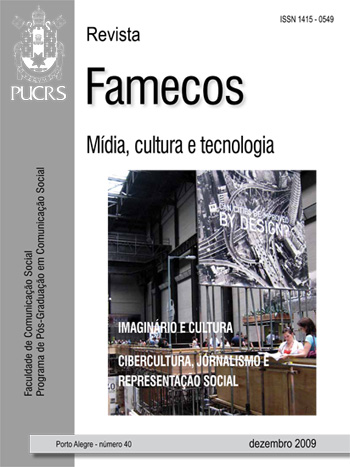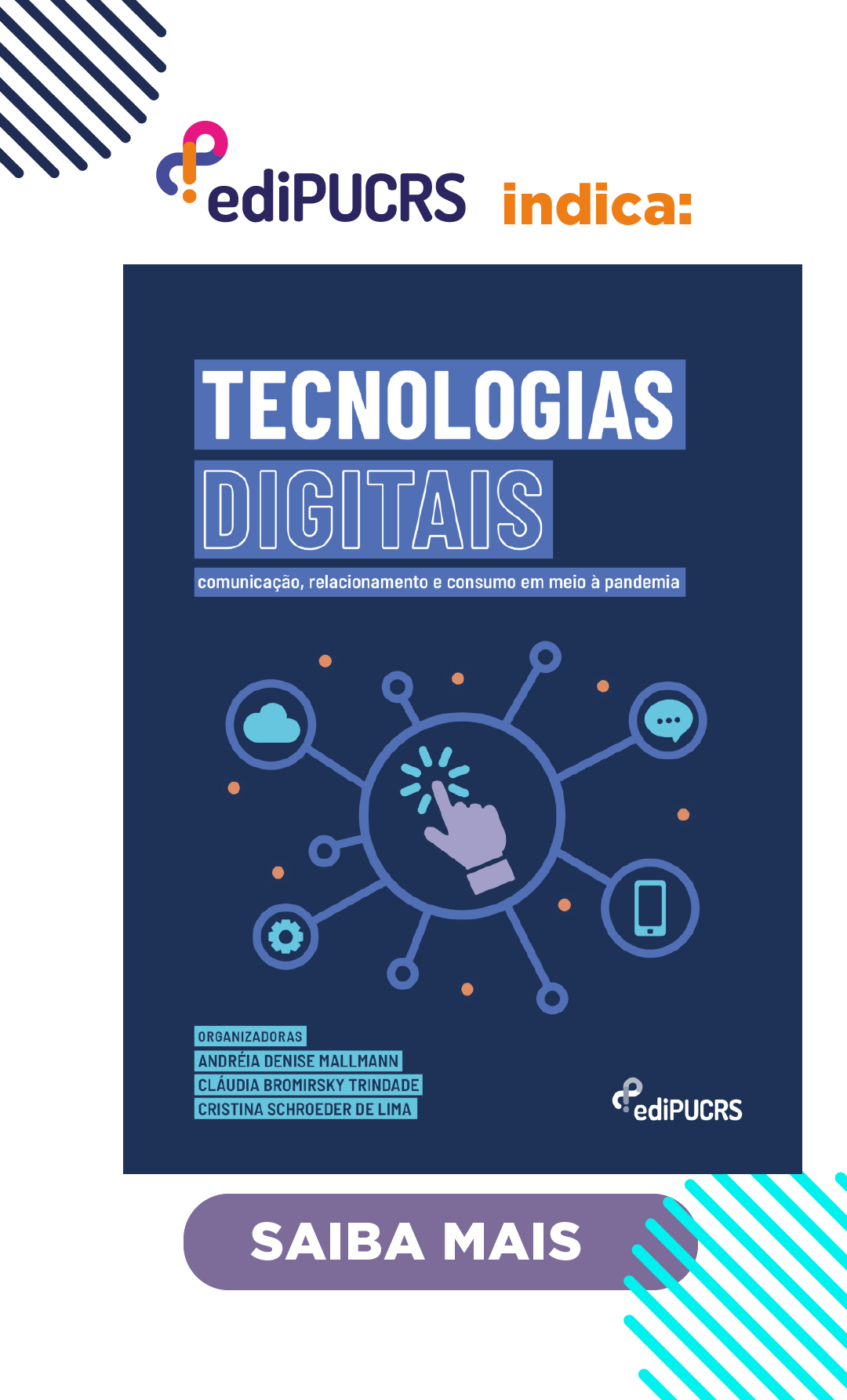An overview of audiovisual journalistic production in the Cyberspace: the experiences of collaborative networks
DOI:
https://doi.org/10.15448/1980-3729.2009.40.6316Keywords:
Digital technologies, audiovisual journalistic narratives, collaborative networksAbstract
The media convergence and interactivity has been incorporated into journalism routine production in Internet, but do not have guaranteed the quality of texts. The work is a critical reflection on how to use the audiovisual language and about the interactive processes offered by news sites and collaborative networks. From a mapping of those experiences and a comparative analysis of networks Overmundo and Canal Contemporâneo, and portals UOL and G1, are aimed possibilities of construction of new formats and audiovisual contents in cyberspace and new ways of production and consumption news. The study reveals that such networks are able to be constituted in innovative practices of journalism.Downloads
References
AGUIAR, Pedro. O “jornalismo twitter” não muda nada. Disponível em: http://www.observatoriodaimprensa.com.br/artigos.asp?Cod=522ENO001 Acesso em: 24 jan. 2009.
ALBORNOZ, Luis A. Periodismo digital: Los grandes diários em la Red. Buenos Aires: La Crujía, 2007.
BECKER, Beatriz. Diversidade e pluralidade: Desafios da Produção de um telejornalismo de qualidade. In: BORGES, Gabriela; REIABAPTISTA,(orgs.). Discursos e Práticas de Qualidade na Televisão. Lisboa: Novos Horizontes, p. 357-367, 2008.
BECKER, Beatriz; TEIXEIRA, Juliana. Webjornalismo Audiovisual: Perspectivas para um Jornalismo de Qualidade no Ciberespaço. Revista do NP de Comunicação Audiovisual da Intercom, São Paulo, v. 1, n. 2, p.97-113, 2008.
BIANCONI, Giulliana. Meninos mais novos já preferem internet à TV no Brasil. Disponível em: http://www1.folha.uol.com.br/folha/informatica/ult124u426874.shtml Acesso em: 21 nov. 2008.
CASTELLS, Manuel. A sociedade em rede: a era da informação: economia, sociedade e cultura. São Paulo: Paz e Terra, 1999.
______. A Galáxia da internet. Rio de Janeiro: Jorge Zahar Editor, 2003.
ESSENFELDER, Renato. Tiragem dos jornais pagos cresce 5% no Brasil, mas média é enganadora. Disponível em: http://www.midialogismo.com/2009/01/tiragem-dos-jornais-pagos-cresce-5-no.html Acesso em: 10 jan. 2009.
FAIRCLOUGH, Norman. Discurso e mudança social. Brasília: UNB, 2001.
FOLHA ON LINE. Internet no Brasil chega a mais de 40 milhões de pessoas. Disponível em: http://www1.folha.uol.com.br/folha/informatica/ult124u416776.shtml Acesso em: 12 nov. 2008.
IT WEB. 41 milhões têm acesso à internet no Brasil. Disponível em: http://www.itweb.com.br/noticias/index.asp?cod=49199 Acesso em: 13 nov. 2008.
KUNCZIK, Michael; VARELA JR., Rafael. Conceitos de jornalismo: norte e sul – Manual de comunicação. São Paulo: EdUSP, 1997.
MACHADO, Arlindo. Arte e mídia. Rio de Janeiro: Jorge Zahar, 2007.
MACHADO, Elias. O Ensino de jornalismo em tempos de ciberespaço. In: MACHADO, Elias e PALÁCIOS, Marcos (Orgs.). O Ensino do jornalismo em redes de alta velocidade. Salvador: EDUFBA, p.11-21, 2007.
NUNES, José Mauro. Acesso à internet no Brasil cresce a passos largos. Disponível em: http://josemauronunes.wordpress.com/2009/01/09/acesso-a-internet-no-brasilcresce-a-passos-largos Acesso em: 12 jan. 2009.
PALACIOS, Marcos. Jornalismo online, informação e memória: Apontamentos para debate. Disponível em: http://www.facom.ufba.br/jol/pdf/2002_palacios_informacaomemoria.pdf Acesso em: 10 abr. 2008.
PRIMO, Alex. Interação mediada por computador. Porto Alegre: Sulina, 2007.
SALAVERRÍA, Ramón. Hipertexto periodístico: mito y realidad. En: Masip, Pere; Josep Rom (Eds.). La utopia digital en els mitjans de comunicació: dels discursos als fets. Un balanç. Barcelona: Universitat Ramon Llull, 2005.
SODRÉ, Muniz. Antropológica do espelho – uma teoria da comunicação linear e em rede. Petrópolis, RJ: Vozes, 2001.
TRAQUINA, Nelson. Teorias do jornalismo, Vol. II. Florianópolis: Insular, 2005.
VIZEU, Alfredo (Org.). A sociedade do telejornalismo. Petrópolis: Vozes, 2008.






